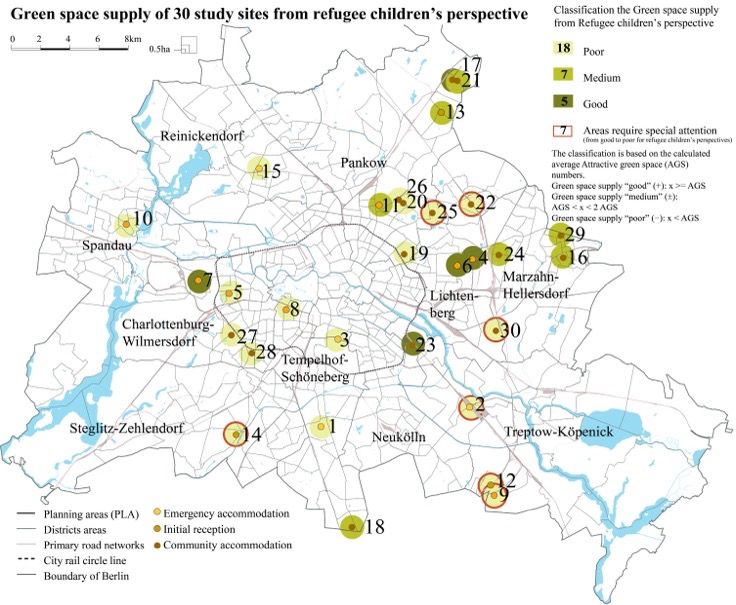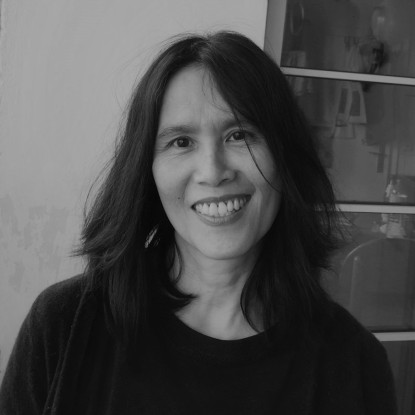New article in LAND reveals lack of quality green spaces from a refugee children’s perspective.
09.07.2024
Even if refugee accommodations are meant to be temporary as part of the initial transition “Wartezustand” before official refugee status / or asylum is granted, studies show that families often stay longer than 6 months and up to years. It is therefore crucial to create initiatives that improve refugee children’s access to physical activity and play opportunities, and reduce barriers that hinder their health development.
In this article, Dr. Siqi Chen from Shanghai Institute of Technology, a former PhD student at UDP, and Prof. Knöll have investigated the availability, access, and attractiveness of urban green spaces in 30 refugee accommodation locations in Berlin. The study paired data from Berlin Atlas of Environmental Justice with spatial characteristics and Open Street Map, using Space Syntax to address the specific needs of refugee children in terms of accessibility and perception of the neighbourhood. Findings indicate that in 63% of refugee accommodations there is more green space available than specified in average official standards. However, the results also show that most of the areas face multi-environmental burdens and that the adjacent green spaces are not attractive. From refugee children’s perspectives, 60% of the locations have limited access to quality green spaces. Barriers include transport infrastructure such as train tracks and highways with high volume traffic as well as generally poor walkability along the way.
More info here: Link
The article concludes with recommendations on how to develop refugee accommodations with active lifestyle and play opportunities in mind. One lesson to be learned is that planners need to consider local situations: If there is no local accessible park, there need to be play areas within or next to the facilities.
The paper concludes a series of papers from Dr Chen’s doctoral studies, which have positioned her as one of the emergent young researchers in the field of urban design x design for this particularly vulnerable population group.
The dissertation can be accessed here: Link
The doctoral dissertation was co supervised by Prof. Takemi Sugiyama, an outstanding colleague and expert on urban design & health from Swinburne University.
Dr. Chen has been a postdoctoral researcher and is now building further research capacities as head of the new “Perceptual Interaction and Healthy Environment” lab at Shanghai Institute of Technology. I wish you all the best in this new role and look forward to continue our conversation as part of new collaborations.



